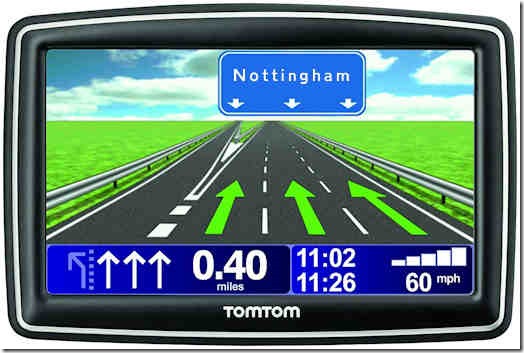
And someone sent me this picture of a sleeping kitten. This amount of cuteness should be illegal.

And someone sent me this picture of a sleeping kitten. This amount of cuteness should be illegal.

My favourite breed of dog is the Husky, but you rarely see Husky puppies. Until I came across this.
 Everyone must have heard about the problems this week with an unprecedented attack on Windows computer systems around the world. I understand that there are already reports of further cases as we head into the new week.
Everyone must have heard about the problems this week with an unprecedented attack on Windows computer systems around the world. I understand that there are already reports of further cases as we head into the new week.
I’m not going to do an in-depth report, since you can find them all over the internet, and they’re written by people much more knowledgeable on the subject than me. However, the one thing you MUST do is install any updates or patches as soon as possible.
Windows 10, Windows 8.1, Windows 7, and Windows Vista systems should already have been patched (back in March). If you haven’t done the patch, do it soon. Microsoft no longer officially supports Windows 8 or Windows XP (except by custom arrangements), though the NHS still uses it from what I have read. However, they have released an emergency patch for both Windows 8 and Windows XP that regular users can apply.
Just do it.
 Theresa May originally backed remaining in the EU. Now, she is the über-mouthpiece for Brexit. This blatant about-turn alone should tell you all you ever need to know about both her and the Tories.
Theresa May originally backed remaining in the EU. Now, she is the über-mouthpiece for Brexit. This blatant about-turn alone should tell you all you ever need to know about both her and the Tories.
The Tories are – and always have been – the party for the elite. They have never represented the working class. However, Brexit has given a lot of working-class people all manner of delusions, and May’s master stroke has been to simply change her outward-looking spots to appeal to these idiots.
So anyway, in related news, I see that May will allow a free vote among her party on the repeal of the Hunting Act – an Act which banned hunting with dogs.
I’m not going to go into the issue of fox hunting in any detail. All I will say is that anyone who hunts and kills foxes or any other mammal for sport using dogs is scum. Theresa May is quoted:
As it happens, personally, I’ve always been in favour of fox hunting…
As I say. Scum. Not content with pushing us back to the 70s, May wants to make it the 1870s.

This is an old article from 2017. You may want to take a look here, as I was told by a Bill Plant franchisee that they “went bust” again in early 2019.
This came in via the Google newsfeeds. It seems that Bill Plant driving school went into administration on 27 April 2017. It has since been bought out by Ecodot, which is:
…a specialist in car vehicle preparation and dual control vehicle hire. Our main services are, Dual control vehicle hire, Alloy refurbishment, Porfessional (sic) Valeting services and Body Repairs
I would have used an image above which related directly to Bill Plant, but from past experience I know that they’re a bunch of prima donnas who threaten court action unless you’re saying anything good about them. Of course, such behaviour makes it even more difficult to say anything good about them.
The reason for the titsup is given as being due to:
…exceptional costs associated with a change in operating model.
Or, in other words, they were a bunch of incompetent prima donnas. Most of the other belly-ups in the driver training industry went bust during the economic downturn during the last decade and the early part of this one. Bill Plant has managed it during a period of economic growth, and that doesn’t bode well for their future.
This industry is not high-margin. Driving lessons can only cost so much before learners won’t pay for them, and at the moment almost everyone is charging the same (in the region of £25 an hour, give or take a few quid). Similarly, instructors who work on a franchise will only pay so much before they walk away, too. The amount they pay for the franchise lines the pockets of the franchiser, who is at the top of the pile, and that franchiser will not be happy unless he or she is pocketing enough to keep a new X5 on the driveway. A kind of status quo is established, whereby the only loser is the instructor – lesson prices can’t go up by much, and the franchiser will still want to increase profits year on year, so the franchise fee goes up. It’s a simple Law of Nature.
It makes you wonder what the numpties did to their “operating model” to screw things so badly. I wonder if it had anything to do with introducing BMW X1s as tuition cars – the prices of which range from £23,000 to £35,000, which is at least double (and up to five times) the price new of most instructors’ tuition vehicles? If it did, I can’t see Ecodot – which is apparently now trading as Bill Plant Driving School Ltd – keeping them. Someone somewhere in the chain has to pay for the overheads.
As I say, this industry is not high-margin, and anyone who buys a top marque as an overhead and then delivers lessons costing the same as they would in a vehicle costing a quarter of that is not going to stay in business long without someone on the outside pumping them money intravenously. Having hubby (or wifey) supply the financial drip feed to their other half is one thing, but for a limited company it’s a different matter altogether.
Ecodot isn’t big enough to pump money in indefinitely, and I can see big changes coming.
 The Mirror has some handy advice for people who might want to watch the Lyrid meteor shower this weekend.
The Mirror has some handy advice for people who might want to watch the Lyrid meteor shower this weekend.
Apparently, you need to look up at the sky to see if it’s clear, because if it’s not you won’t see anything. Having established the clarity of the sky, you then need to keep looking up because that’s where the meteors will be.
I’m glad they told me that. I’d never have figured it out by myself.
Somewhat more relevant, other than the fact that it is the “second brightest star in the sky”, is that Vega is in the North East (the two stars on the handle side of the pan of The Plough point roughly towards it). The Mirror doesn’t mention that – which is odd, since most of its readers would probably need help finding the sky, let alone a specific star given only by name.
I’ve always been a Labour voter, though I didn’t vote last time because Jeremy Corbyn is not the person to lead this country (even less so with his Brexit sympathies). Ooops. I DID vote last time, but vowed not to the next time because of Jeremy Corbyn. Thanks to a reader for pointing that out to me. My bad.
After today’s announcement of a General Election – probably on 8 June if it gets the go-ahead – my first thought was that I wouldn’t vote this time, either. Having said that, I haven’t seen the Lib Dem manifesto yet. If they’re against Brexit then they can count on my vote.
 An email alert has just come in from DVSA advising that the driving test will change from 4 December 2017. The changes are as follows:
An email alert has just come in from DVSA advising that the driving test will change from 4 December 2017. The changes are as follows:
The bay park exercise could involve reversing in (as now) and driving out again, or driving in forwards, then reversing back out again. The straight reverse on the right will be for about two car lengths, then driving back out into the normal traffic flow.
The sat nav will be supplied by the examiner and won’t involve route setting. Going the wrong way won’t result in a fail as long as it is done properly (as now with independent driving).
The show me/tell question asked while driving will be of the “show me how you’d clean the windscreen if it was dirty” kind (not “show me how you’d adjust your head restraint”).
Although the changes are watered down a little from what was being discussed last year, I am totally opposed to the removal of the turn in the road and corner reverse exercises. These should have remained on the list of possible manoeuvres to make sure instructors were teaching people properly. DVSA says that “you should still be taught them by your instructor”, but that is bollocks – within 18 months the majority of ADIs won’t go anywhere near them (many won’t right from the off), and pupils are going to start kicking up a stink when they know they’re not going to be tested and yet are still being taught them on lessons (especially the ones who have trouble with them, or who can’t afford lessons as it is).
DVSA has only provided the most basic information showing response to the consultation. There is no detailed breakdown of who voted what – God only knows why you would want to ask “the public” how it should be tested on something it can’t do very well in the first place – and some obvious weasel words which amount to “well, even though people said ‘yes’, we decided it would be ‘no’”, and vice versa. I know that some weak-minded ADIs who were involved in the trials were gushing about the changes from the moment they had their first meeting with DVSA, but I can’t believe that those with a mind of their own were happy with everything.
I don’t have an issue with the other changes.

 29 March 2017 is a date which will go down in history as a turning point.
29 March 2017 is a date which will go down in history as a turning point.
It marks the point at which stupidity as a prerequisite of being allowed to vote in the UK was officially sanctioned. It also marks the official sanctioning of hatred and xenophobia as a British trait suitable for campaigning purposes, since the only reason the aforementioned stupid people cast their votes the way they did last June was because of hatred and xenophobia directed at Europeans (and anyone else who doesn’t look British if you’re just too stupid to realise they might not be). Oh, and because of that bloody bus promising £350,000,000 a week to the NHS.
Of course, the Americans have taken a similar wrong turn with the election of a certain gentleman who – if you take into account some of the more artistically contrived stories the last few days – is either a complete a**hole or a misunderstood genius.
Occam’s Razor springs to mind here: if you come across as an a**hole to just about everyone who hears you every time you open your mouth, all things being equal, you probably are an a**hole. The same goes for Brexit, of course, because no matter how many times you repeat the mantra “everything will be all right”, the simple fact remains that the UK is leaving the largest economy in the world to strike out on its own as the fifth largest, and without having a clue how it is going to manage to retain that position.
Yes, Article 50 has been triggered.
So, 29 March 2017 will live in infamy as the precise point when the UK turned from metaphorically shooting itself in the foot, and aimed a little higher.